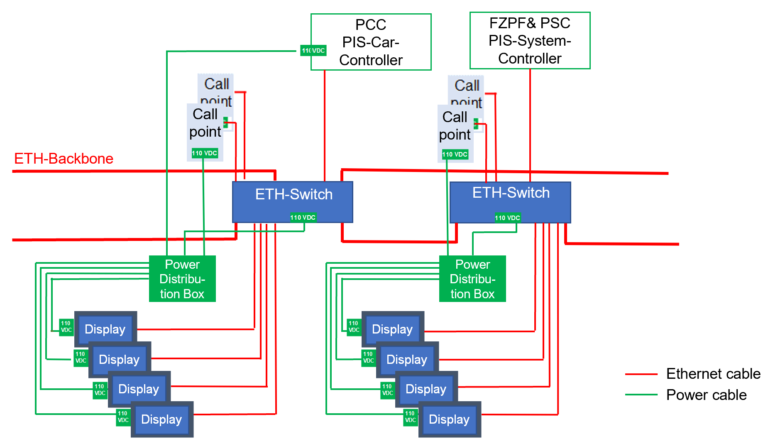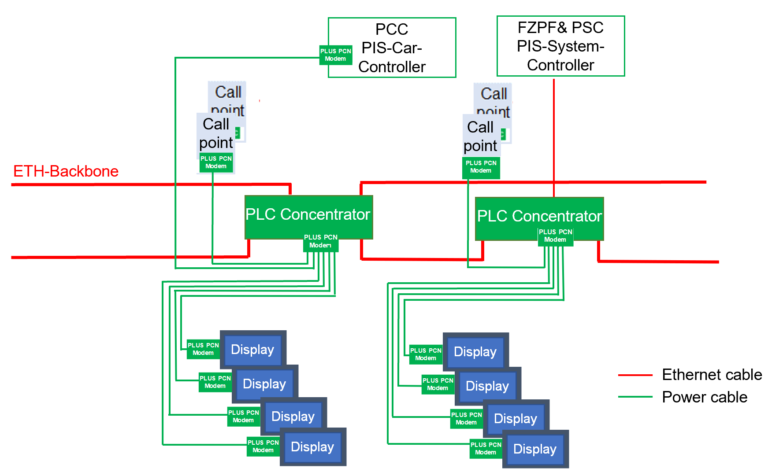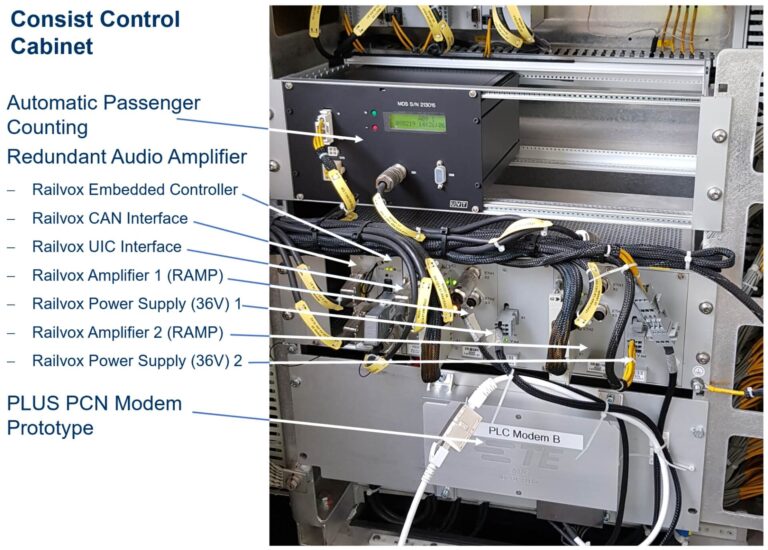Passenger information systems (PIS) in today’s trains consist of audio components (amplifiers, emergency call points) and an increasing number of displays in various technologies (TFT, LED, OLED, …). These devices are typically connected via an Ethernet network within the train. A modern train has several hundred PIS devices. The length of the network cables required can be over 50 km per train. Together with the required Ethernet switches, this is a significant cost, space, maintenance and increasingly also weight factor.

With data transmission using PLC via existing power supply cables to the individual PIS devices within a train consist, a considerable part of the Ethernet network can be eliminated, which significantly reduces costs and cable space.
With plc-tec’s PLUS-PCN solution, based on the Power Line data bUS technology and developed in close cooperation with the leading PIS supplier ANNAX-Wabtec, the existing switch Ethernet-based PIS network can be completely removed for intra-consist communication. The Ethernet-based backbone network remains, but interfaces directly to the PLC modems via the power supply, eliminating the need for Ethernet switches. This provides a very cost-effective solution.
This architecture involves the use of two PLUS-PCN Concentrators per consist (one at each end) connected to the Ethernet backbone network. This provides equivalent redundancy to an Ethernet-based solution. A PLUS-PCN modem including coupler and power supply unit for the 36 V DC train PDN is integrated in each application terminal (e.g. monitor, display or audio). The power supply and coupler versions meet all relevant railroad standards for electronic devices and EMC. Suitable interfaces to the existing application devices are integrated, which support the VLAN/IP address support.


PLUS PCN has been tested for 4 years in full operation with a prototype system consisting of four PLUS-PCN prototypes integrated into a passenger train consist (MUTZ Stadler) of the Swiss rail operator BLS AG. A PLUS-PCN concentrator was connected to an existing PIS switch. One PLUS-PCN modem each was installed on a TFT display, a side indicator and an audio amplifier.
The applications were audio announcements, TFT display updates, and page display updates. The PLUS-PCN prototype system has been running in normal train operation, in temperatures below 0 °C in winter and above 40 °C in summer. Through a combination of remote monitoring of the passenger information system in conjunction with the connection to the PLUS-PCN modem prototypes, the system was constantly monitored.
Tests have shown that the total throughput of the PLUS-PCN network is approximately 20 Mbit/s. While this is less than the 100 Mbit/s specified for Ethernet, it is sufficient to support the necessary PIS applications (including streaming applications expected in the future).
Savings from PLUS PCN by eliminating Ethernet cables and some of the Ethernet switches:
Costs
Space requirements
2025 plc-tec.ch – plc-tec AG | ALL RIGHTS RESERVED – IMPRESSUM | UMSETZUNG WEBTOTAL.INFO